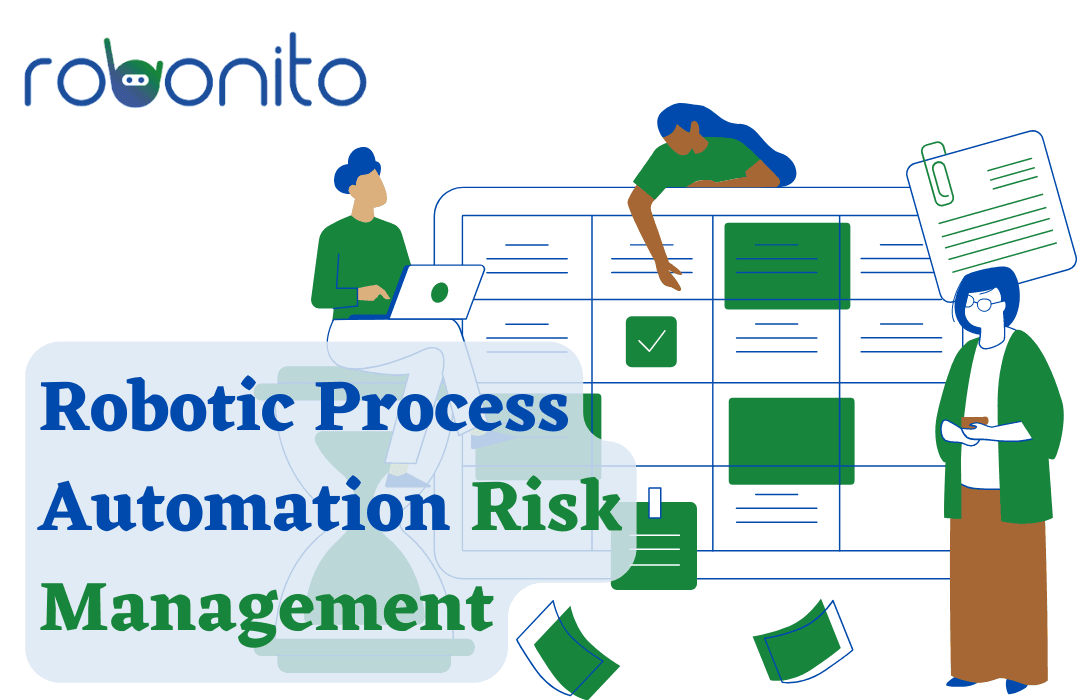Introduction to Robotic Process Automation (RPA)
Welcome To The Guide In Robotic Process Automation Risk Management. Robotic Process Automation (RPA) refers to the use of software robots or artificial intelligence to automate repetitive and rule-based tasks within an organization. These robots mimic human actions, interacting with systems and applications to perform tasks such as data entry, data validation, report generation, and more. RPA technology has gained significant popularity in recent years due to its potential to increase efficiency, reduce costs, and improve accuracy. In This Article we will Deeply Understand Robotic Process Automation Risk Management, this is going to be the pillar content for you.
Understanding the Risks of RPA
While RPA offers numerous benefits, it's essential to be aware of the potential risks associated with its implementation. Let's explore some of the key risks:
Security Risks
Implementing RPA introduces new security vulnerabilities within an organization's IT infrastructure. As software robots interact with sensitive data and systems, there is a risk of unauthorized access, data breaches, and potential exposure to cyber threats. Organizations must implement robust security measures to safeguard data and ensure compliance with privacy regulations.
Process Risks
RPA relies on predefined rules and instructions to execute tasks. If these rules are not appropriately defined or updated, there is a risk of incorrect data processing, leading to errors and inefficiencies. Organizations should conduct thorough process analysis and design to mitigate this risk and ensure seamless automation.
Compliance Risks
Organizations operating in regulated industries need to comply with specific rules and regulations. RPA implementation should align with regulatory requirements to avoid compliance breaches. Failure to address compliance risks can result in financial penalties, reputational damage, and legal consequences.
Integration Risks
Integrating RPA with existing systems and applications can pose challenges. Incompatibility issues, data inconsistencies, and technical complexities may arise during the integration process. Effective risk management involves conducting comprehensive integration testing, identifying potential bottlenecks, and implementing necessary modifications to ensure a smooth transition.
Best Strategies for Robotic Process Automation Risk Management
To mitigate the risks associated with RPA, organizations should adopt effective risk management strategies. Here are some key considerations:
Risk Assessment and Planning
Conduct a thorough risk assessment to identify potential risks and their impact on business operations. Develop a comprehensive risk management plan that outlines preventive and corrective measures to address identified risks.
Security Measures and Controls
Take this very seriously. Implement robust security measures, such as access controls, encryption, and monitoring tools, to protect sensitive data and systems from unauthorized access. Regular security audits and vulnerability assessments should be conducted to identify and address any security gaps.
Continuous Monitoring and Evaluation
Establish mechanisms for continuous monitoring and evaluation of RPA processes. Regularly assess the effectiveness and efficiency of automated tasks, identify areas for improvement, and make necessary adjustments to optimize performance.
Training and Change Management
Invest in training programs to educate employees about RPA and its associated risks. Foster a culture of risk awareness and accountability within the organization. Implement effective change management practices to manage the transition to automated processes and address employee concerns.
Vendor Management
Vendor Management can't be ignored when it comes to Robotic Process Automation Risk Management If your organization relies on third-party vendors for RPA implementation, establish strong vendor management practices. Conduct thorough due diligence to ensure vendors have robust security measures in place. Define clear service level agreements (SLAs) and regularly assess vendor performance to maintain the desired level of risk control.
Conclusion
Robotic Process Automation (RPA) has the potential to revolutionize business processes by automating repetitive tasks and driving efficiency. However, it is crucial to understand and manage the associated risks effectively. By adopting proactive risk management strategies, organizations can maximize the benefits of RPA while safeguarding their data, maintaining compliance, and ensuring a smooth transition to automated processes.
Revolutionize your software testing with Robonito, the ultimate no-code RPA automation testing tool. Say goodbye to endless testing hours – Robonito slashes testing time by a staggering 98%! Ready to experience the future of software testing? BOOK A FREE DEMO NOW and transform your testing process today!
FAQs On Robotic Process Automation Risk Management
Q: Can RPA completely replace human employees? Ans: While RPA can automate repetitive tasks, it is not designed to replace human employees entirely. It works alongside humans, augmenting their capabilities and allowing them to focus on more complex and strategic activities.
Q: What industries can benefit the most from RPA? Ans: RPA can benefit industries such as banking and finance, insurance, healthcare, manufacturing, logistics, and customer service, where there are significant manual and repetitive tasks involved.
Q: How long does it take to implement RPA? Ans: The implementation timeline for RPA can vary depending on the complexity of processes, system integration requirements, and organizational readiness. It typically ranges from a few weeks to several months.
Q: What are the key factors to consider when selecting an RPA vendor? Ans: When selecting an RPA vendor, consider factors such as scalability, security measures, integration capabilities, ease of use, vendor reputation, and customer support.
Q: What is the difference between RPA and AI (Artificial Intelligence)? Ans: RPA focuses on automating rule-based and repetitive tasks, while AI involves the development of systems that can perform tasks requiring human-like intelligence, such as natural language processing and machine learning.
